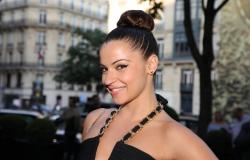The Montreal author had already taken some of these steps, in writing, when the diagnosis fell, in the middle of a pandemic. The “spectre of illness” then introduced itself into his life, at the same time as into his book, and obviously deviated the course, in both cases.
It wasn’t to set a course for death or any other dark destination, however.
Rather to turn towards the living, towards the “outside”. With its insects, its birds, its invasive plants. Which François Turcot contemplates with great attention, from his balcony, from his garden, from the alley.
To then celebrate them, little by little, throughout the verses.
“I wanted to make it a book which is not about the illness – for me that was super important – but which is colored by the experience of the illness. I didn’t want to directly name the word cancer. To make room for something else. It’s a book for me which is on the side of the living,” puts the main interested party in context, regarding what is intended to be his seventh publication with La Peuplade.
Behind all this exterior, all this “immediateness”, the disease almost disappears entirely. Leaving only his shadow between the pages.
“Despite the body slowing down, despite the effects that are there, despite the dizziness, it is necessary to remain attentive to what is happening outside. It is turned towards the outside, towards the very close, towards the immediate. I wanted to talk about landscapes, gardens, wastelands that move us, that make us dream.”
The journey always takes place on site, in the author’s apartment and daily life. But the destinations, combined with the past as in an imaginary present, only seem more distant, more multiple still. To Mexico, Turkey, Spain, Iran, Manitoba, Mile End.
Like so many “paintings” on the walls of this vast poetic exhibition, before which we ourselves parade with discreet steps, undetectable, ghosts, like the author.
“They are either landscapes that I have already seen, encountered, species of distant gardens, memories. Or journeys of thought. When you have a slowed down body, you can allow yourself to travel in a more still way.”
Even if he acts as a guide, François Turcot never imposes these trips. No more than their destinations.
These are still only proposals, he will qualify. He who takes pleasure in saying things without exactly saying them. By leaving it to the readers to make their own little journey to come and meet him.
Thus, he will dedicate the book to his partner, and will mention her a few times throughout the pages, but will be content to call her “A.” Then his writing itself will sometimes give the impression of painting certain images lip service, in fragments. Only revealing a palpable portrait along the way.
“We enter the book with small steps, on the level of the heart, which can be interpreted as the level of emotional frequencies, or the level of cardiology. We walk slowly and appear full of landscapes, strange gardens, dreamed, real, projected. The more the book progresses, the more the images are constructed. And at the very end, there’s a crescendo.”
A crescendo, yes. With the gardens, the cosmos, the big, the small. And nice parentheses, in between. Which will have flowed just as naturally, at their own rhythm, on the poet’s keyboard. “Behind The ghost footstepsthere is a sense of urgency, with the illness driving the book. And on the other hand, I really wanted to give it all the time it needed to appear exactly the way I wanted it to appear.”
A collection or book of poetry?
If this is already a seventh publication since 2006 for François Turcot at La Peuplade, it is perhaps his first collection of poetry with the Saguenay publishing house, he agrees. Because the six previous works were more of a “book of poetry”, and the nuance is not trivial, according to him.
“I have a natural tendency to call it a book of poetry, because for me a book has a device, a beginning, a line of tension, an end. And in my work, there is a lot of that, thinking of reading as an architecture, a project where we embark in a very precise direction. But this one looks more like a collection, in the sense that it is a series of landscapes, of still journeys, which can be read independently of each other.






